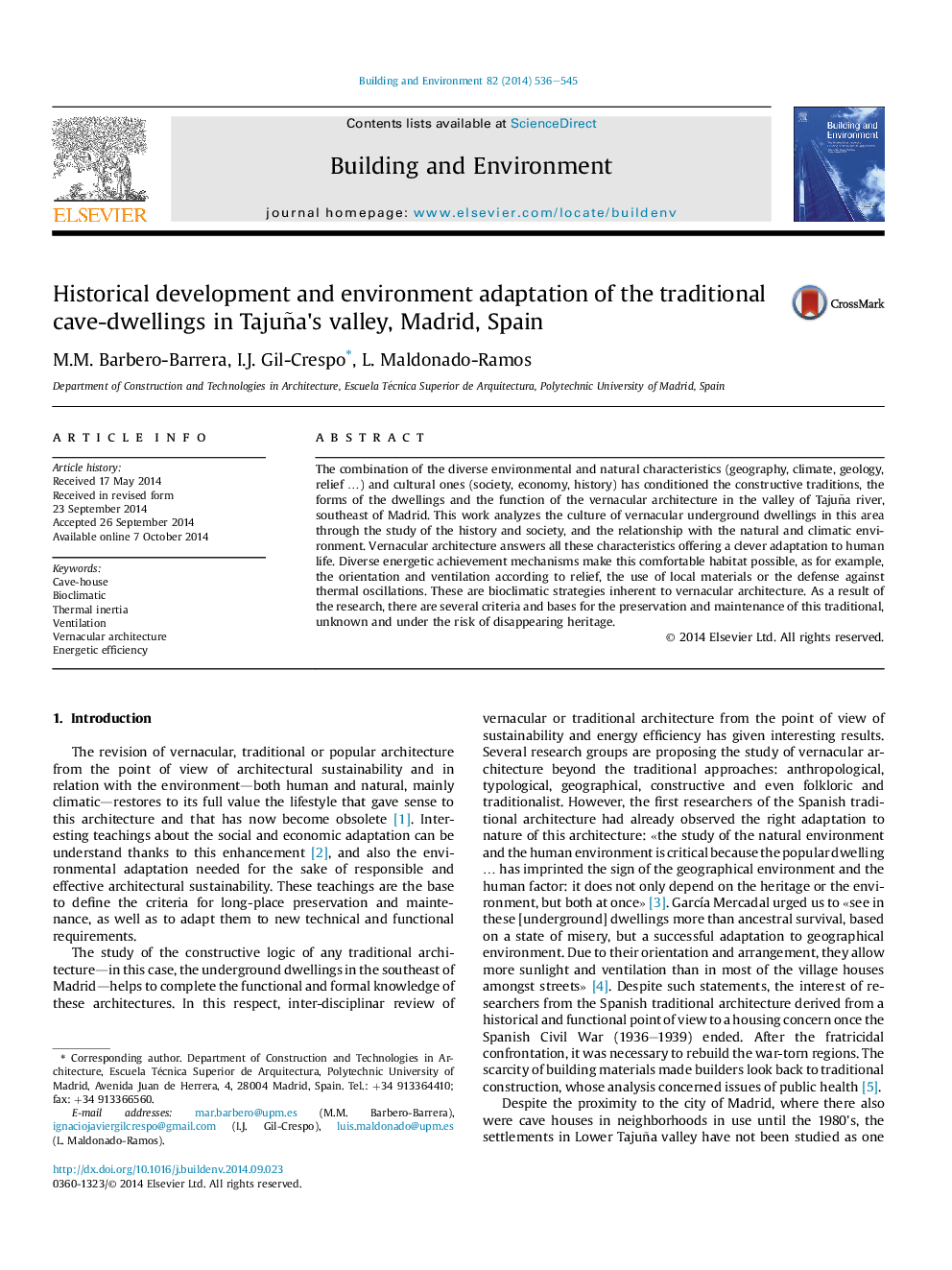| Article ID | Journal | Published Year | Pages | File Type |
|---|---|---|---|---|
| 6700407 | Building and Environment | 2014 | 10 Pages |
Abstract
The combination of the diverse environmental and natural characteristics (geography, climate, geology, relief â¦) and cultural ones (society, economy, history) has conditioned the constructive traditions, the forms of the dwellings and the function of the vernacular architecture in the valley of Tajuña river, southeast of Madrid. This work analyzes the culture of vernacular underground dwellings in this area through the study of the history and society, and the relationship with the natural and climatic environment. Vernacular architecture answers all these characteristics offering a clever adaptation to human life. Diverse energetic achievement mechanisms make this comfortable habitat possible, as for example, the orientation and ventilation according to relief, the use of local materials or the defense against thermal oscillations. These are bioclimatic strategies inherent to vernacular architecture. As a result of the research, there are several criteria and bases for the preservation and maintenance of this traditional, unknown and under the risk of disappearing heritage.
Related Topics
Physical Sciences and Engineering
Energy
Renewable Energy, Sustainability and the Environment
Authors
M.M. Barbero-Barrera, I.J. Gil-Crespo, L. Maldonado-Ramos,
